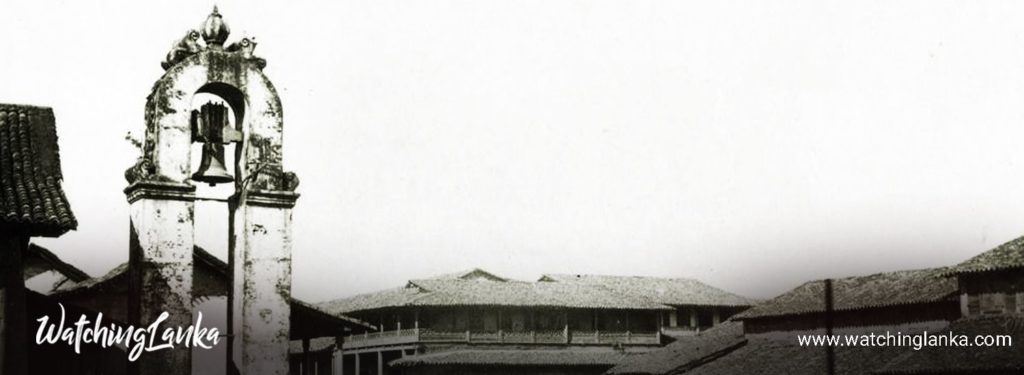Kayman’s Gate is a gateway to the former Colombo Fort, located at the foot of Mount Wolvendel in the Pettah district of Colombo, Sri Lanka. Main Historic Free Standing Bell Tower is still located at the intersection of Main and 4th Avenue. This bell tower was built by the Portuguese in 1554 and later served as the site of public hangings.
During the Portuguese rule in Colombo, the Kayman’s Gate served as the eastern gateway to Colombo Fort and was built to protect the city’s colonial trade interests. When needed, a drawer was lowered from the gate connecting the fort outside the city. Outside the gate is the St. John’s River, which, of course, is a canal connected to Lake Beira, which drains most of the fort’s waste. This attracted the crocodiles in the lake and they swam into the canal to feed on the waste. When the fort was captured by the Dutch in 1656, Colombo’s new colonial overlords named the east entrance Kayman’s Gate after the crocodiles (kaaiman in Dutch) that swam in the canal.
During the Dutch period, the Kayman’s Gate bell tower was rebuilt and a new bell was hung from Bellfry. The bell came from a church in the Royal Kingdom of Kotte, Sri Lanka, which was abandoned in 1565 and later captured by the Dutch. When the Dutch found the bell among the ruins of a church, they took it to Colombo and hung the new bell on the tower. The bell, which still hangs in the tower today, is inscribed with “Ave gratia plena dominus tecum Benedicta tu in mulieribus,” or “Hail full of grace the Lord is with thee, blessed art thou among women.” During the Dutch period, the bell was used to close the gates of the fort and to declare a night curfew.
[envira-gallery id=”4093″]In 1796 Colombo was captured by the British. He broke the Kayman’s Gate and grabbed the box after borrowing. The fort was flattened under British occupation. Its walls, barriers, canals, and moats are broken or filled. The Kayman Gate was also demolished, but the bell tower was kept to summon the congregation for service at Wolvendaal Church. It was also used as a darker place of use: until the late 19th century, the bell tower was used for public hanging in the immediate area where it now stands.







